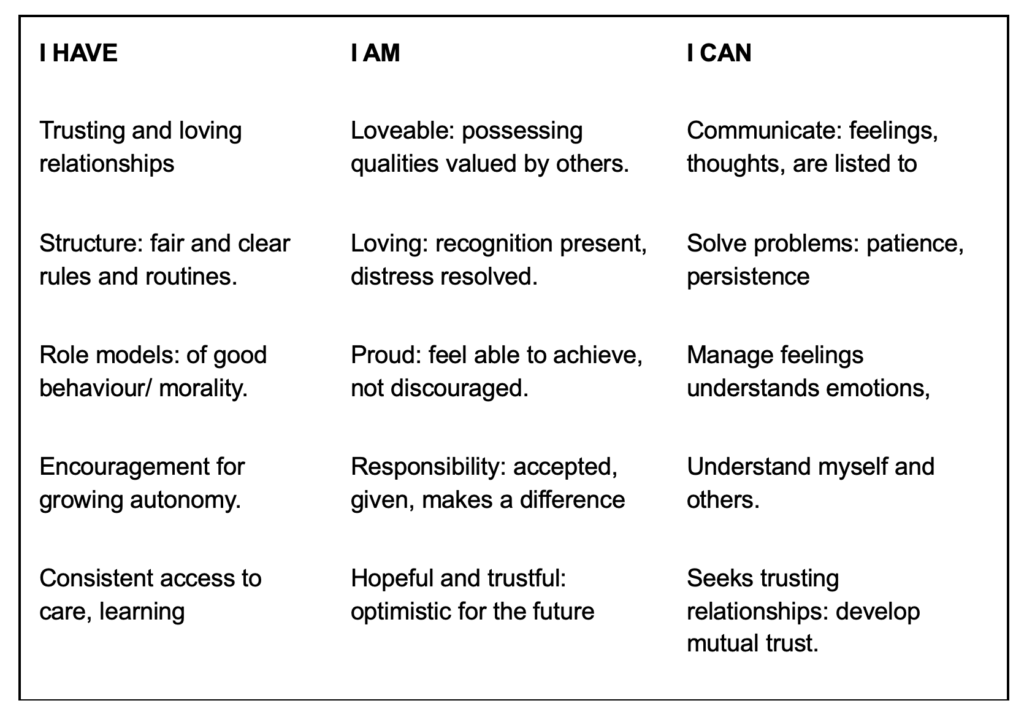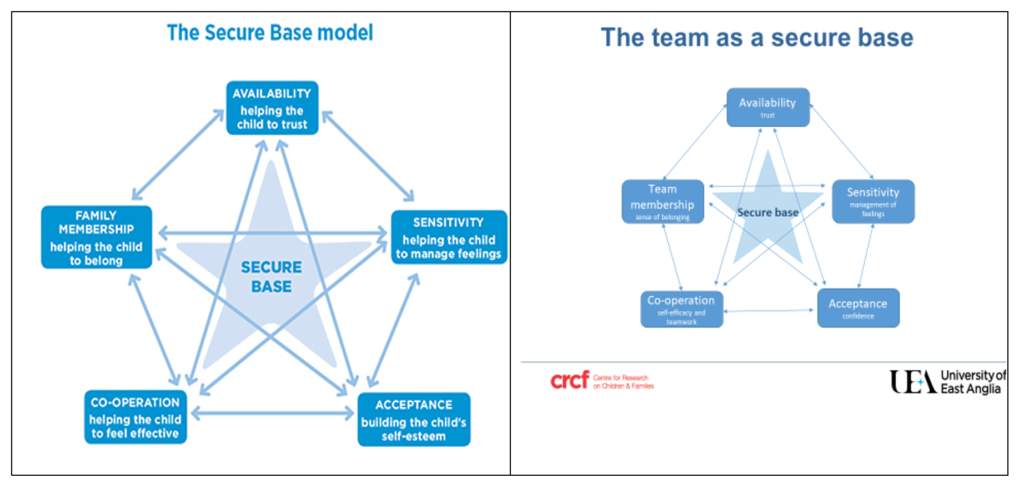
Explaining the Theory and Practice for Fair Pay in Residential Child Care
NCERCC makes the case for why Fair Pay is necessary, and it is urgent to take the theory into practice for the Residential Child Care workers and the children they are caring for.
We will be looking at
- Resilience
- Secure Base
- Emotional containment
Resilience
The reason there should be Fair Pay is because it creates a Resilient workforce.
Residential Child Care workers provide the relationships and environment that is absorbed by a child. The child needs to know unconditionally’ I have, I am, I can’.
Residential Child Care workers in turn need to be provided with relationships and an environment that facilitates relationships. They need to know unconditionally ‘I have, I am, I can.’
The resilience framework applies to Residential Child Care workers and children.

Secure Base
The Secure Base model proposes five dimensions of caregiving, each of which is associated with a corresponding developmental benefit. The dimensions overlap and combine with each other to create a secure base.

It is the providers responsibility to ensure all these are present in the life of a Residential Child Care worker.
There is research evidence that people will stay where they feel ‘pulled in’ and leave when they feel ‘pushed out’.
It we want stability of relationships for children we need to start by ensuring the stability of the Residential Child Care workers.
All research shows culture is an important ‘building block’. It influences attitudes; attitudes influence behaviour.
Concordant beliefs and strong positive staff cultures produce a positive impact on performance; children’s level of educational achievement has been shown to depend on their experience of a secure, supportive, and settled environment.
If we want a positive culture, we must actively create it.
Emotional Containment
Residential Child Care requires an emotionally ‘holding’ environment.
There must be systems of staff support containing complex networks of processes and relationships so that these might then contain the relationships between staff and young people. Systems of staff support include staff meetings, consultancy, supervision, and management (Ward, 1995b). Braxton (1995) stresses the importance of the organisation creating a holding environment that enables staff to address and work through their inner experiences and covert [and often unconscious] agendas so that they can provide metaphoric holding for young people. Such environments contain safe spaces for staff to freely and genuinely express feelings provoked by the work, including those which may appear critical, destructive, or otherwise unprofessional. Expression is not enough, however; staff also need to be supported to make sense of these feelings in a way that gives insight to the young people, their ‘selves’ and their practice.
Ruch’s model of reflective practice is pertinent. It is comprised of three facets.
The first, emotional containment, is focused on the importance of containing relationships. It is within the context of these relationships that uncontainable or unthinkable experiences can be processed and made thinkable and manageable.
The second facet is organisational containment and focuses on clarity of organisational, professional, and managerial policies and practices.
The third facet, epistemological containment, refers to contexts which value and promote the integration of technical-rational sources of knowledge with those deriving from a more practical-moral source. These manifest in collaborative and communicative forums and practices, and enable practitioners to think about and discuss contentious, uncertain and/or complex issues in a multifaceted way (Ruch, 2005).
Children need their Residential Child Care workers to be active, attentive, attuned. Providers need to make the environment where these can be experienced with continuity and reliability.
Conclusion
The argument for Fair Pay in terms of theory and practice is established. There is no doubt we can, and will, add more.
Fair pay, terms and conditions are essential factors in creating the conditions for Residential Child Care workers to deliver the theory and practice through relationships for about and with the children.
The current commentary and analysis are addressing commodification and marketisation (profits), and logistical (Sufficiency) concerns.
From here on the analysis and commentary needs to start with the implementation of established theory and practice.
Home is where we start.


